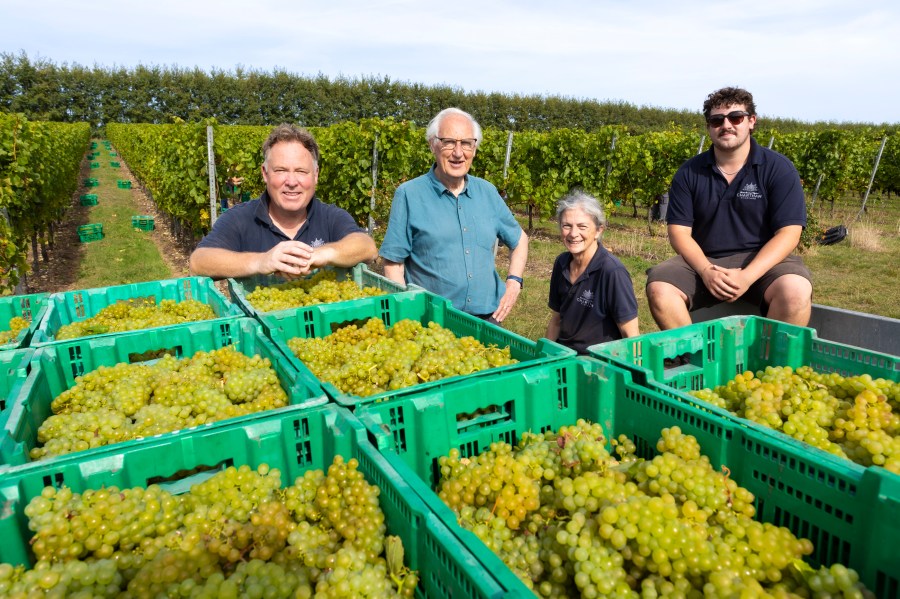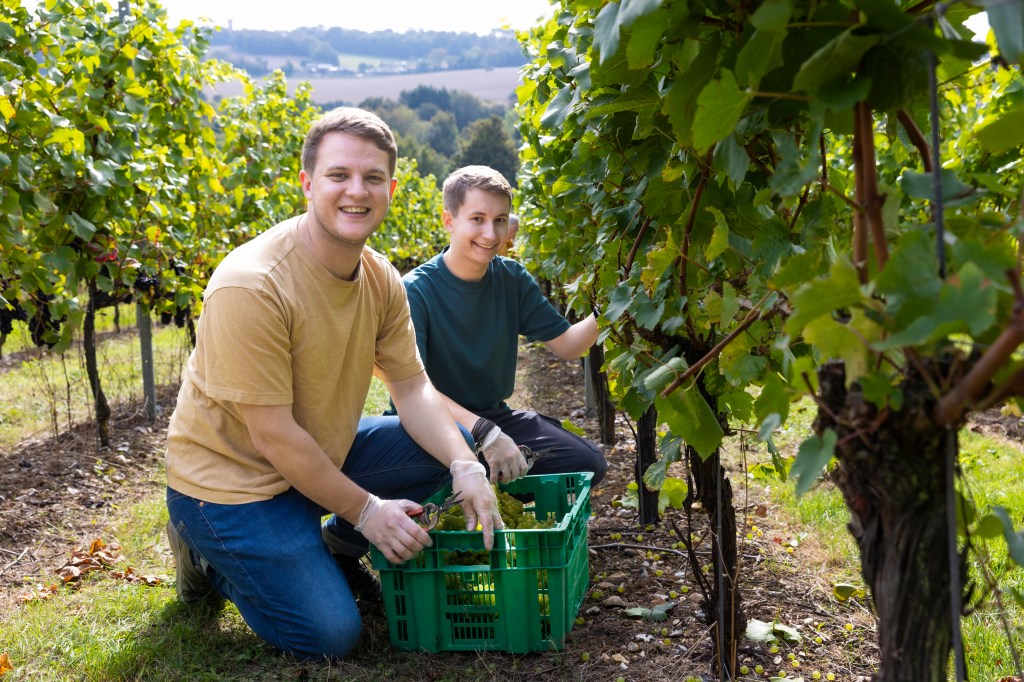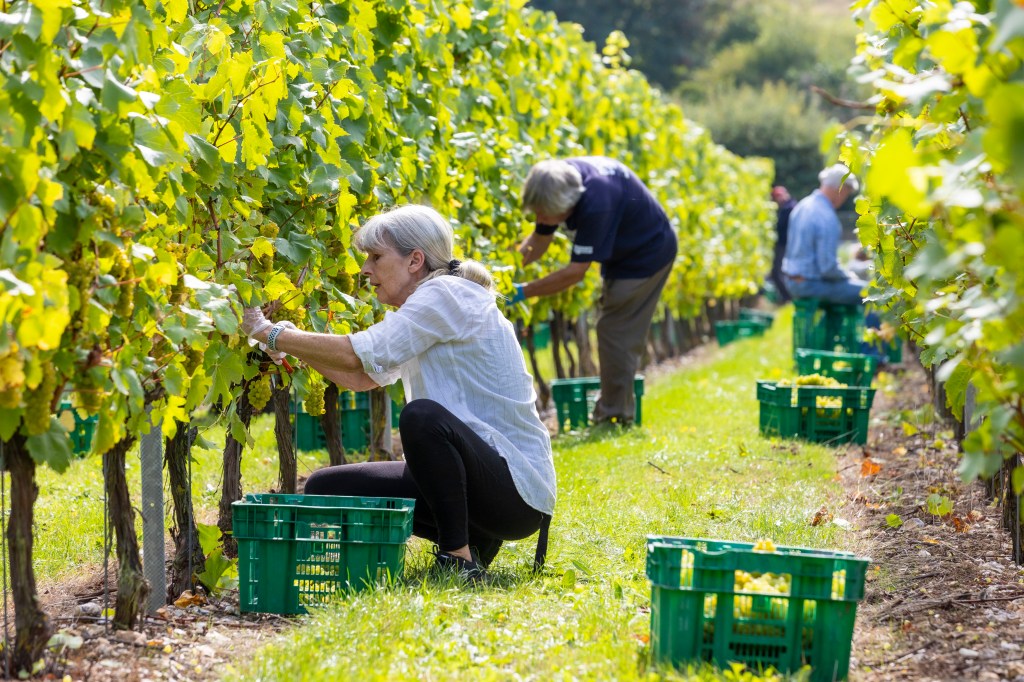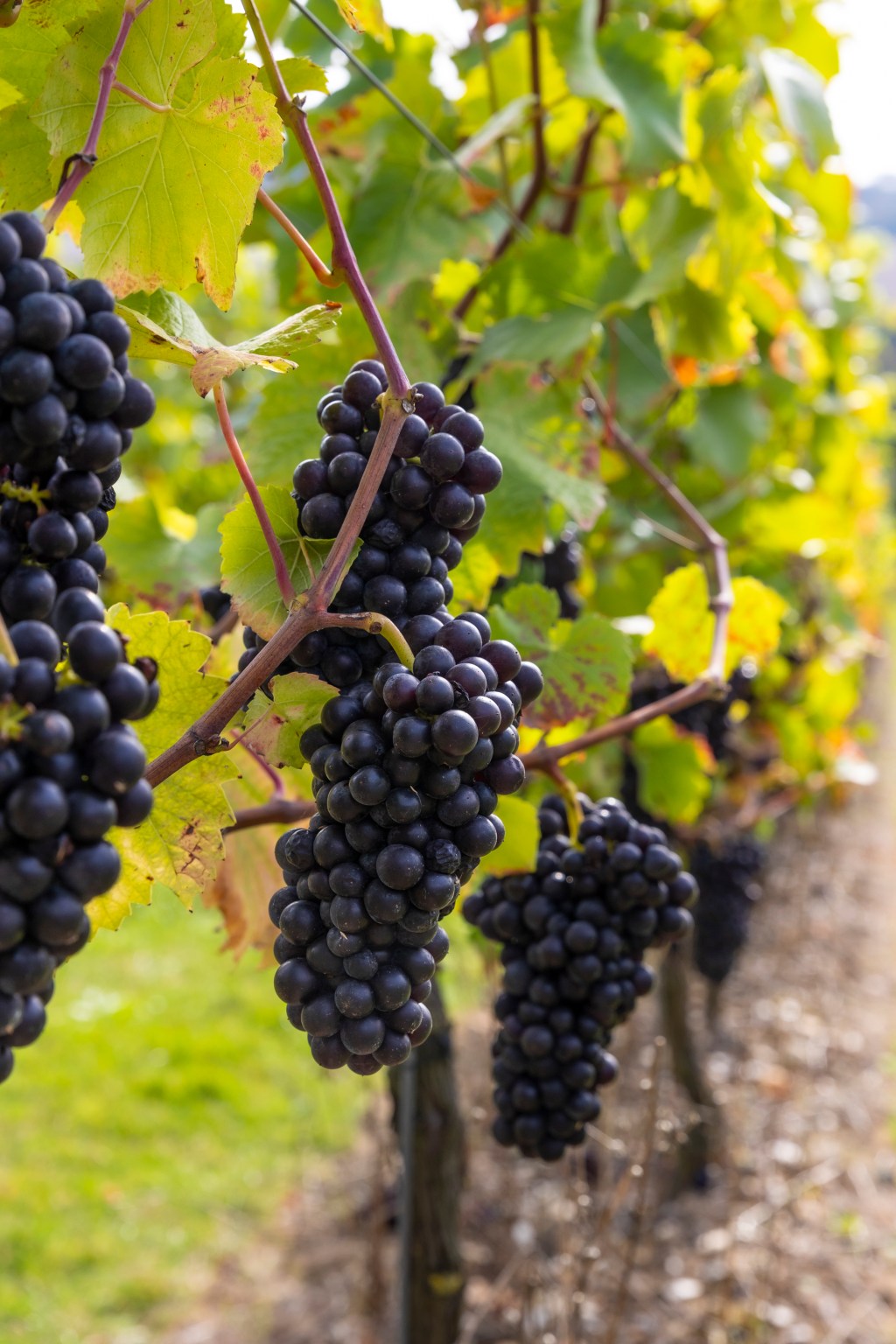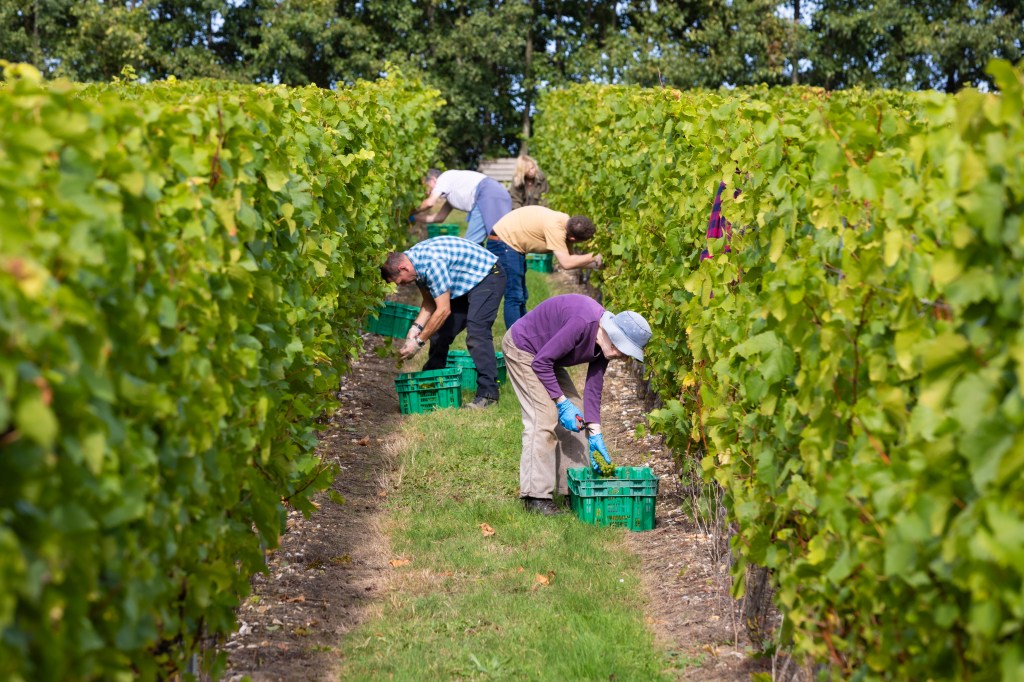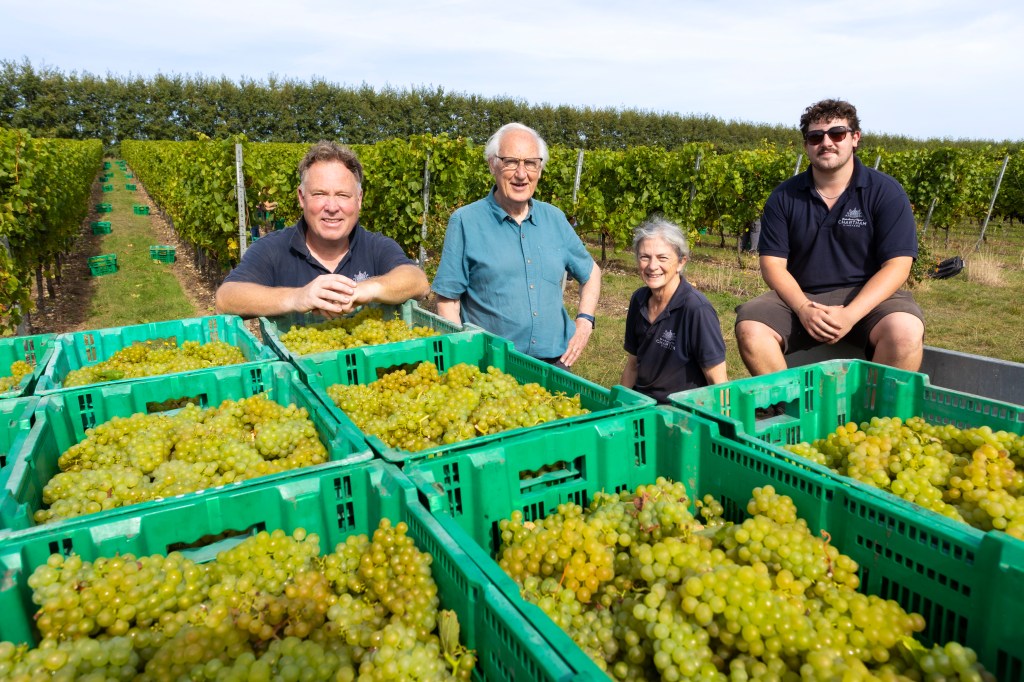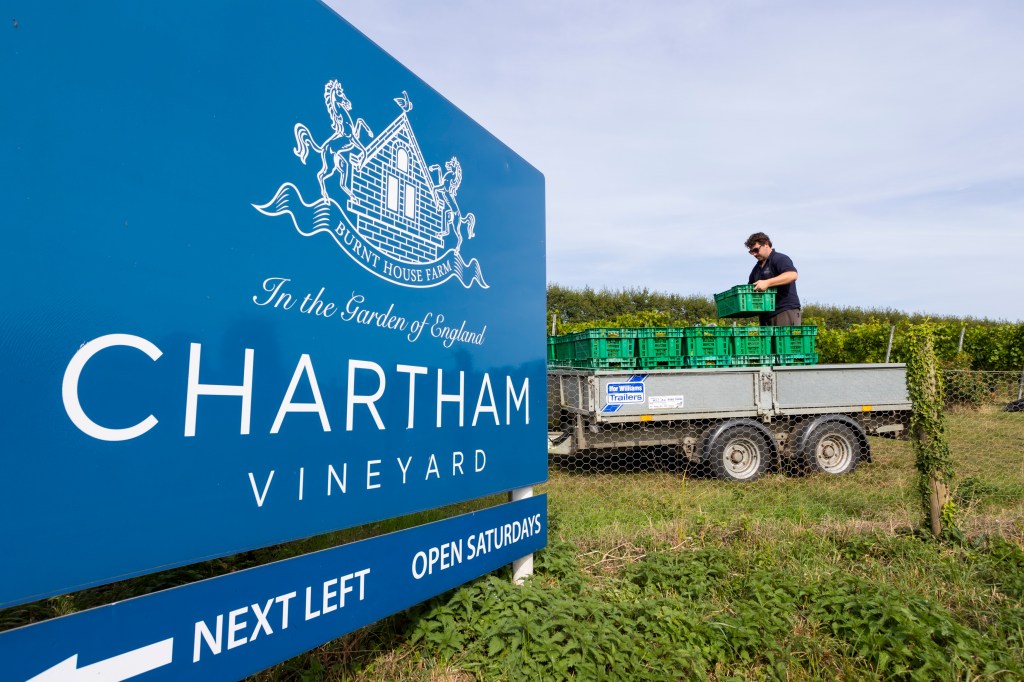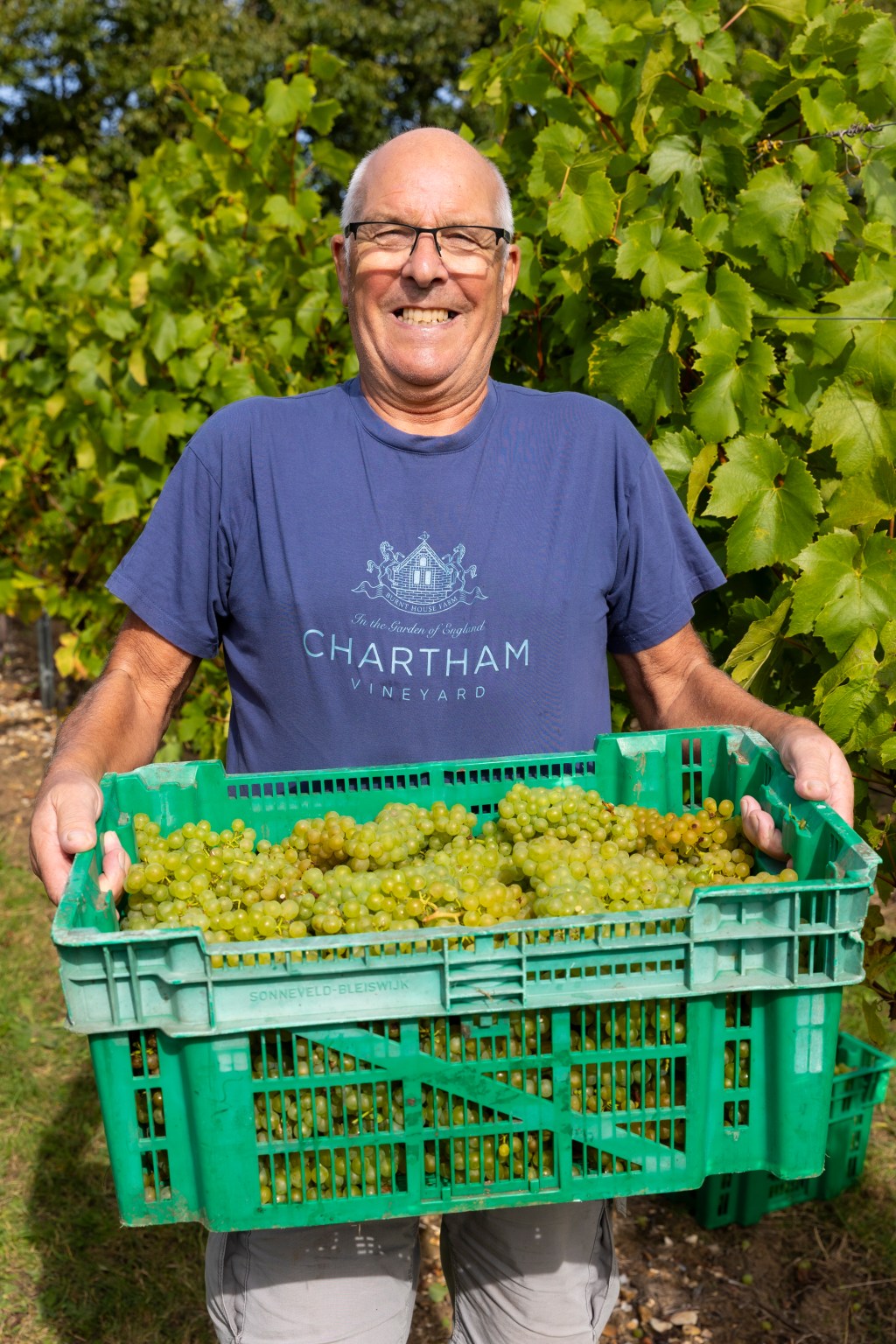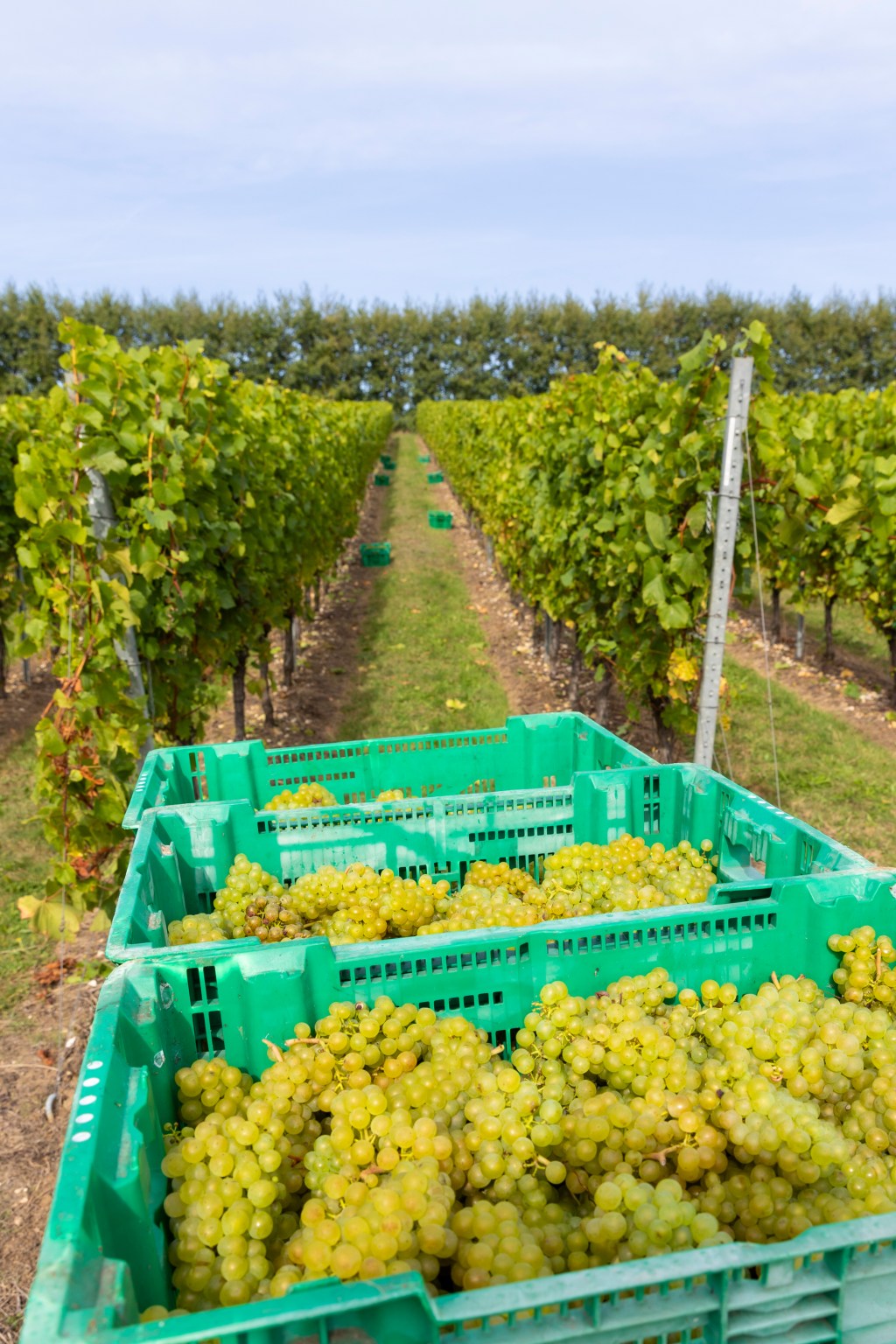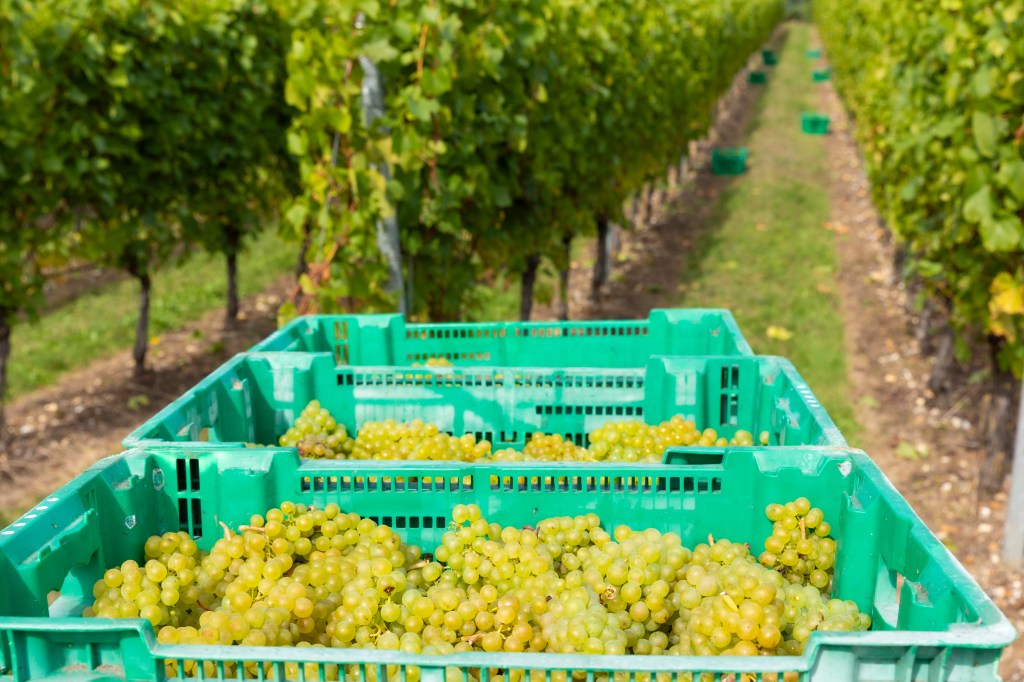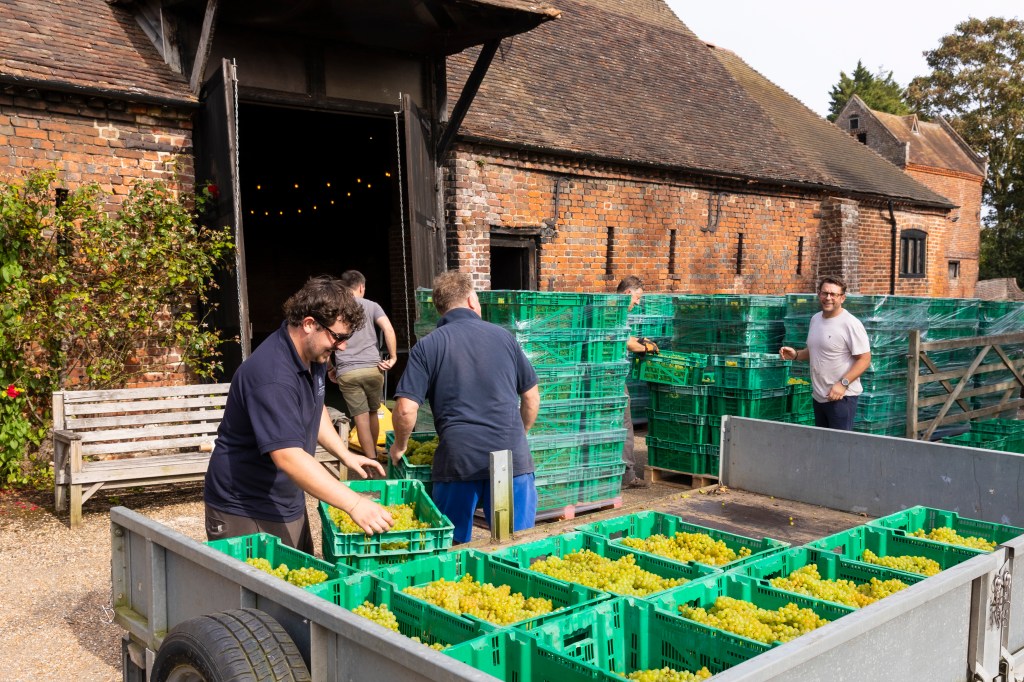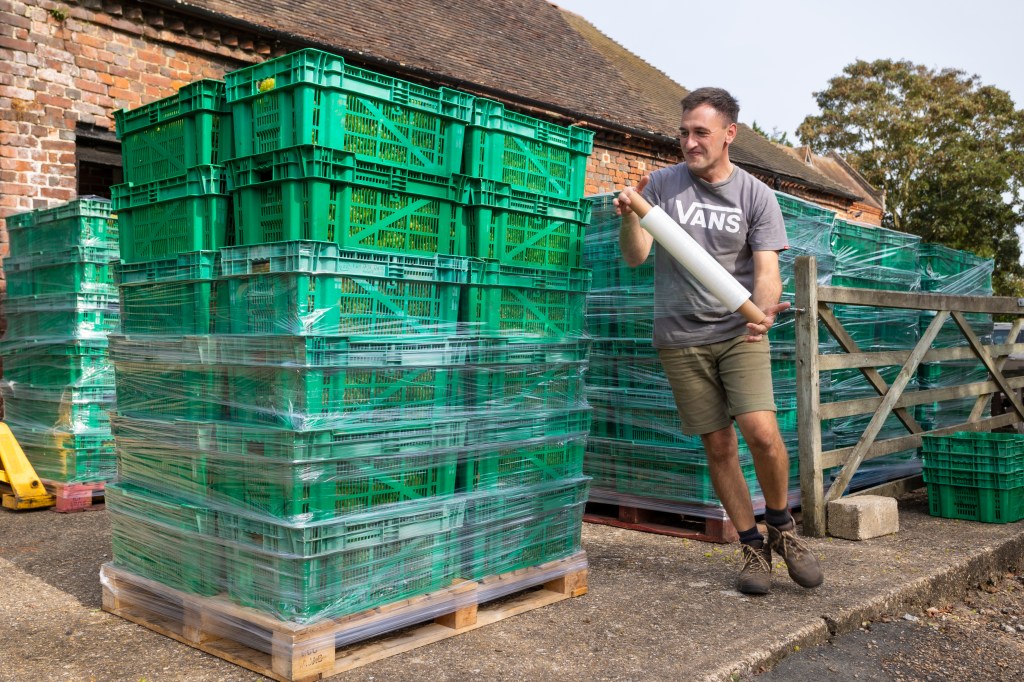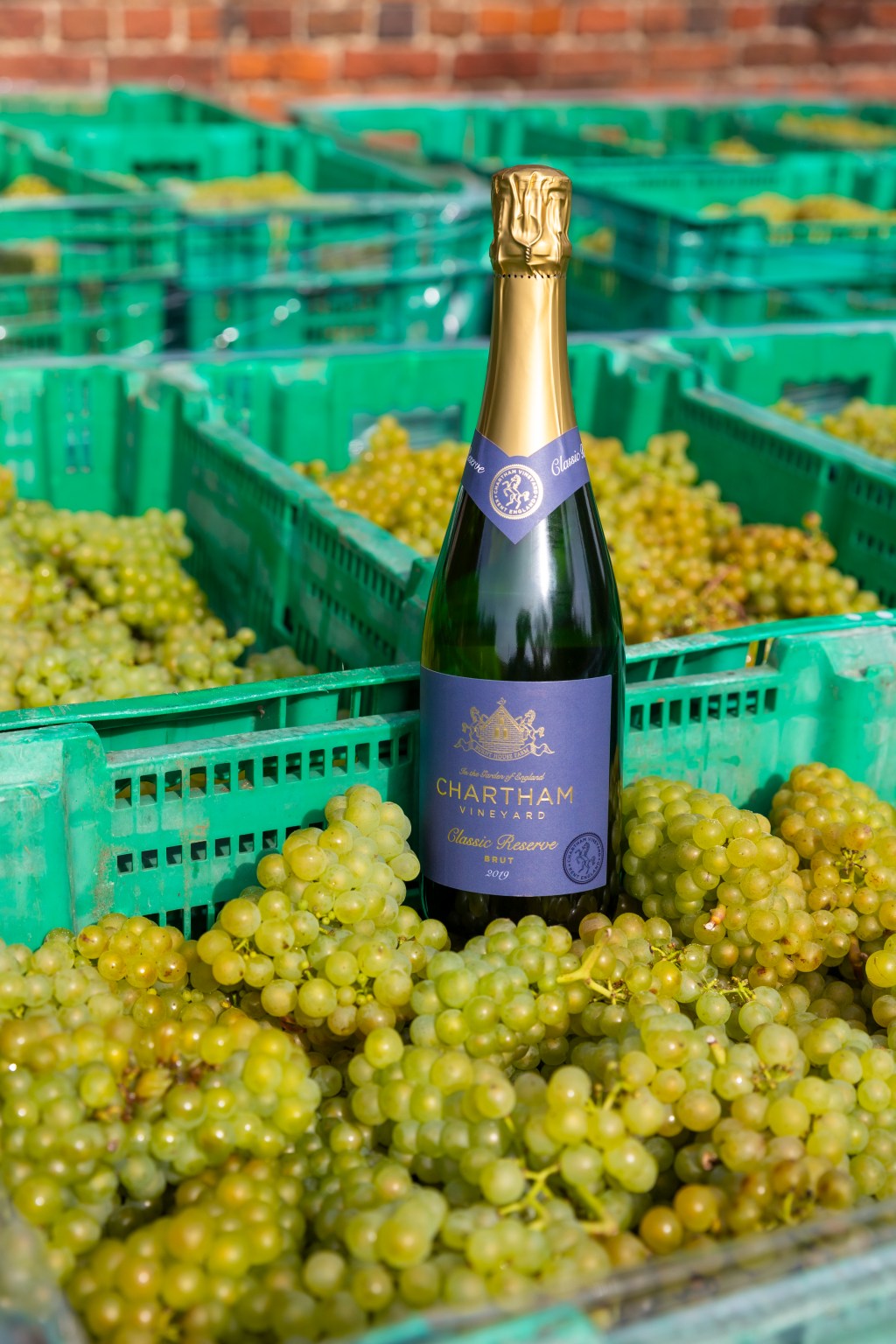Dr Roz Goodenough is a retired GP and grew up on the farm. Roz and her husband Richard received numerous offers to develop the historic buildings on the site into housing. This included a grade II listed Dovecote and a threshing barn that had survived a World War II incendiary bomb. Roz and Richard did not want these beautiful buildings to become housing but instead wanted to use them in a business that was connected to the agricultural heritage of the site.
When researching the site Richard discovered that in 1303 there had been vines on the estate that adjoins the property. “We have records from the Canterbury Cathedral Archives detailing the high maintenance costs of the ‘press house’ etc… the next vineyard to be established in Chartham was by us, 710 years later in 2013,” said Richard.
Recognising that the site needed to be useful if it was to be preserved Roz and Richard decided that a vineyard would fit beautifully with the long tradition of fruit farming that had previously been part of this landscape. The threshing barn is now used to house both tours and tastings alongside other events such as Shakespearian theatre productions, concerts and annual Arts Society exhibitions. Of course the harvest supper for the volunteer pickers is also hosted in this barn once the grapes are successfully sitting in tank or barrel. The local train station is literally a few hundred metres from the door which is an unusual situation for a vineyard and so the events are all well attended with visitors able to leave the car behind.
The dovecote features on the label for Chartham Vineyard. It was designed by Richard’s son Andy Goodenough who is also the vineyard manager. “The dovecote is in need of renovation work but is an example of early vertical farming,” joked Richard. At the bottom there are two arches that would have been used for access for pigs, chickens would have been housed on the next floor and the top of the building could provide roosts for 1500 doves and pigeons. Possible future plans for this amazing building are a viticulture heritage museum. It seems such an appropriate place to house a glimpse into the agricultural past especially as the vineyard has done so much to ensure the future of the farm as well proving that history should essentially be a living, breathing part of the present.
Richard Goodenough is a remarkably interesting person and he is also a person who could be described as interested. He possesses a rare enquiring mind. Having retired from running a department of Geography and Environmental Science at Canterbury Christchurch University he became a volunteer guide at the Royal Academy in London. Richard continues to paint and there is always an interesting art installation at the Vineyard housed in an historic cattle shed that still has the brick feeding trough in the floor. As an art venue it is intimate and quirky but with Richard’s experience the exhibitions are both professional and perfectly illuminated. The current exhibition has just begun “so we don’t have many red dots yet,” he said with a smile. In line with the bigger galleries red dots are the system which indicates that pieces have already been sold. The Ashford Visual Artists exhibit will run for three months until Christmas.
Chartham Vineyard received much help in the early years with Stephen Skelton MW providing much needed advice not only regarding which rootstocks and clones were best suited to this part of Kent but also where exactly on Burnt House Farm the vines were best situated. “The vines are planted on flinty loam on a massive chalk bedrock. A nearby chalk pit on our farm is a listed site of geological interest because the flint and marl bands can be correlated exactly with the same sequences across the Channel into France,” explained Richard.
Tours and tastings are held throughout the year. “We have done this since the very beginning, people are fascinated by what goes on in the vineyard and they love to see it,” said Richard. Every Saturday tours are conducted at 11.00 and 14.00. Andy the vineyard manager will take the visitors on a guided tour of the vineyard and Richard then conducts the tasting back in the barn. Tours are modified in the winter months when the weather is bad with an illustrated presentation on ‘a year in the vineyard’ instead of a tour. With everything that Chartham Vineyard has to offer it is hardly surprising that the onsite shop is really busy and Richard estimated that about 40% of all sales occur at the cellar door. On a Saturday Richard’s daughter and granddaughter work in the shop and the ‘family feel’ at the vineyard reaches out in every direction.
The grape varieties that have been planted are Chardonnay, Bacchus, Pinot Gris and Pinot Noir and Chartham currently produce six wines, three still and three sparkling. “We are really pleased with the mix of still and sparkling we produce,” Richard said. He highlighted that the floral aromatics of Bacchus are something that he enjoys even if he describes the grape as “untidy” to grow. The wines of Chartham Vineyard regularly win awards and amongst the haul there were Silver Decanter awards in 2022 for the Rosé de Noir Brut 2019 and the Pinot Noir 2020. “The Pinot would initially only ripen one in every three years but now it fully ripens every year,” said Richard. “As a lecturer in environmental science I would tell my students there were no positives to global warming so I feel a little bit uneasy about this,” he added.
The efforts that Roz and Richard have taken to ensure everybody is included in the experience of the vineyard are quite remarkable. As you leave the historic farm buildings behind only a few metres from the car park is a small plot of vines. Richard explained it is a demonstration vineyard with three rows of each variety that are grown on the site. The main vineyard whilst having a fantastic view is situated on a slope that is accessed through a pretty patch of land that has as many wild orchid varieties. Realising that some people would not be able to traverse this terrain the demonstration vineyard allows everyone on the vineyard tours the opportunity to see for themselves the different varieties and how the vines are cared for, trellised and trained.
This level of care and attention to detail is extended to everything and everyone at Chartham Vineyard including hosting Vineyard magazine during a busy harvest day that saw 6.9 tonnes of Chardonnay picked by a variety of volunteers before the lorry arrived to deliver the fruit to Litmus wines. As this journey involves traversing the M25 the fruit is picked, the crates are packed onto the pallets and ready to leave by lunchtime. It all seems to be a smooth process but underlining that no two harvest days are the same Richard explained that the Bacchus harvest the previous week had come in at eight tonnes (which was more than was expected) and this had left time itself quite pressed to get the pallets ready for collection and off to the winery before the inevitable traffic build up.
In the vineyard Roz has refreshments ready for the team of volunteers that are part of the harvest day. Depending on the variety to be picked there are 30-40 volunteers on site and Roz always has a checklist on hand to ensure that everything is well prepared. Often vineyards that use volunteers will pick on Saturdays but at Chartham picking is done during the week and a diverse group have arrived to be part of the experience. “We have a list of 350 people who are willing to volunteer,” said Roz. “Sometimes people will come later after they have finished the school run,” she added. All the volunteers get to take a bottle at the end of the day “usually we try to make it the variety that they have picked,” explained Roz. Today the volunteers have received a bottle of the Classic Reserve 2019 which comprises 70% Pinot Noir and 30% Chardonnay. There is not currently any Blanc de Blanc available as it is awaiting its labels and should arrive in November ready for December sales.
Working alongside several generations of the family are pickers who have been part of this farm for decades. Richard Wrench worked at Burnt House Farm for John Waller, Roz’s father when there were fruit trees on the site and remembered harvesting: Cox, Bramley, Howgate Wonder, Tydemans Early and James Grieve apples. Roz explained that James Grieve is a variety that could be used for eating and cooking but did not travel well. Four decades later Richard is harvesting on the site but grapes instead of apples “this is enjoyable, it is a good gang,” he added. This shows that Chartham Vineyard is not just closely connected to the local community but integral within it.
Other volunteers on the day included James Cusselle who is a sommelier at The Pig at Bridge where the Pinot Gris and Pinot Noir feature on the wine list. “Seeing first hand what grapes are being picked and what wines they will be used for gives you investment in the local area, getting involved in harvesting is about feeling a part of the local vineyards, it’s an empowering experience,” said James. Alongside James was Nathaniel Last, another team member at The Pig at Bridge who said: “It is quite therapeutic to be part of the picking team.” James explained that members of the team have been involved in harvest at Gusbourne, Chapel Down and Simpsons this year. “It helps to understand the journey of the wines not just at harvest but coming here in the winter and then seeing the lifecycle of the vines. Richard and Roz will send me emails letting me know how things are coming on in the vineyard throughout the year,” he added.
In the vineyard Andy spoke about the green harvest that has just been performed “there are two reasons for that, obviously to develop better sugar on the ones we have left but also it is a picking situation for us as well to make sure that the pickers don’t actually pick them.” Although this is something that may not be a concern with a group of professional pickers Andy said: “We have 300 volunteers on our list and they do a fantastic job. I think we are very lucky. As soon as we have tested we might be picking the next day or the day after but we get about 40 pickers per pick.”
Speaking about disease pressures, Andy explained that they get very few disease problems in the vineyard. “Sticking to a spray programme is important,” he said but then he added “initially the most important thing is the health of the plant.” Andy has worked hard to keep on top of the health of the vines using organic sheep pellet fertiliser along with using sheep for winter grazing. Foliar nutrition in the form of seaweed extract is used at certain times throughout the year and Andy explained that with Agrii just a few miles away they have built a good relationship with the company.
Frost can and has been a problem on the site. Andy said: “Our average tonnage is between 20-24 tonnes, but about three or four years ago it went down to just over nine tonnes so for sustainability reasons frost can be a problem because we won’t have a lot of stock. So if we do have a frost it can be a significant problem.” Andy pointed not just to the cost of frost mitigation measures but also to the logistics of lighting candles or towing fans.
There is very little bird predation at the site which Andy put down to other fruit farms in the area such as cherry and apple orchards making a more enticing meal. The wasps are highly evident as we walk the vineyard and Andy spoke about fruit fly having been a significant problem in the past. This year the traps that act as an early warning have not indicated a problem and so there has been no need to implement any form of control although this has not been the case in other parts of the country.
The family connection in the vineyard has been further strengthened with Andy employing his nephew Jack Palmarini for the last year. Jack said: “It is quite satisfying taking part in this harvest knowing that I have done most of the work to get here.” Viticulture is definitely in Jack’s heritage as his paternal grandfather in Italy also has vines and produces wine. Jack would like to take the apprenticeship route into viticulture and is hoping to be able to study with Plumpton. Having worked at Chartham for a whole year he has reached out to local vineyards that can offer the experience of working in a winery as well. “I love doing the work, I love being outside and I love the cycle of knowing this is what I have helped to grow,” Jack concluded. Andy does all the vital cuts in the vineyard at pruning which is quite an impressive task. “Last year the pulling out was done by Jack,” Roz concluded.
Having been made so welcome by this family during a busy harvest day I found myself lingering amongst the tranquil historic buildings looking at the pallets of chardonnay ready for collection. As if on cue – proving that there is no such thing as a perfectly smooth harvest I left Richard and Roz discussing the logistics of fitting 16 pallets on a truck with enough room for 14…
- James Cusselle (left) and Nathaniel Last from The Pig at Bridge
- A family harvest: Andy Goodenough, Richard Goodenough, Roz Goodenough and Jack Palmarini
- Richard Wrench

